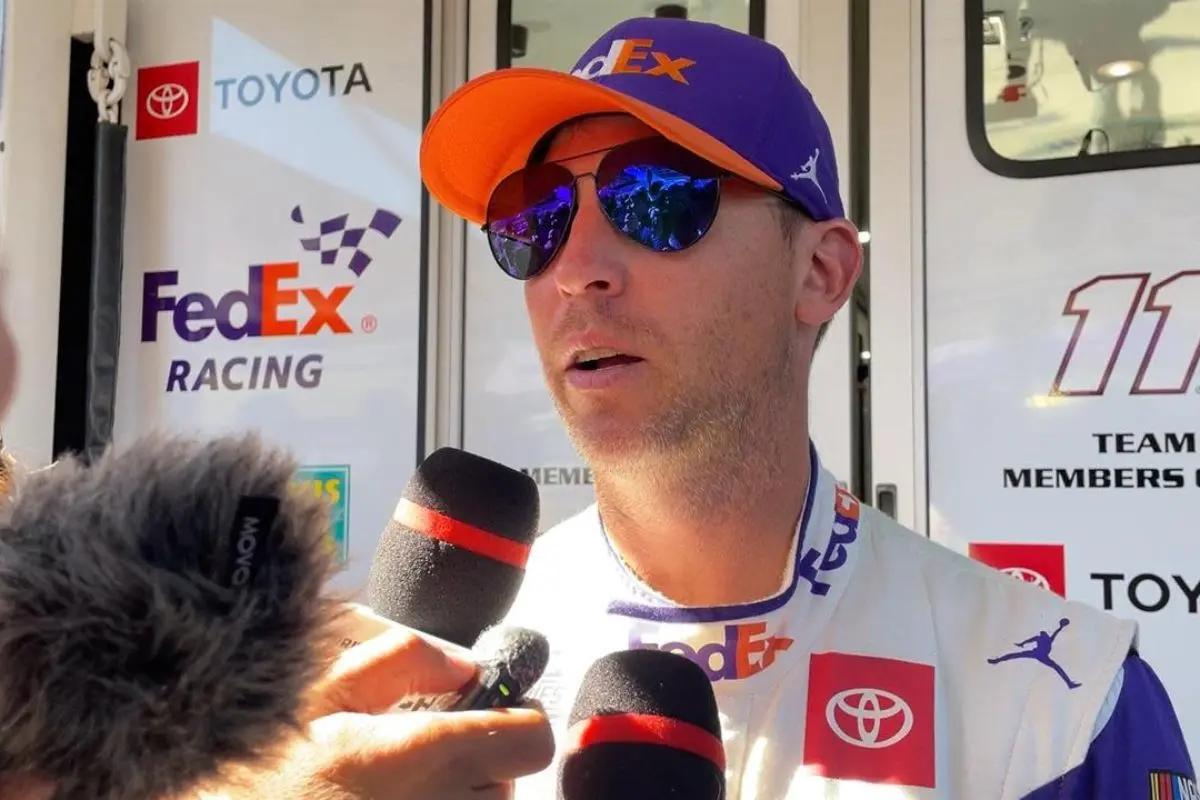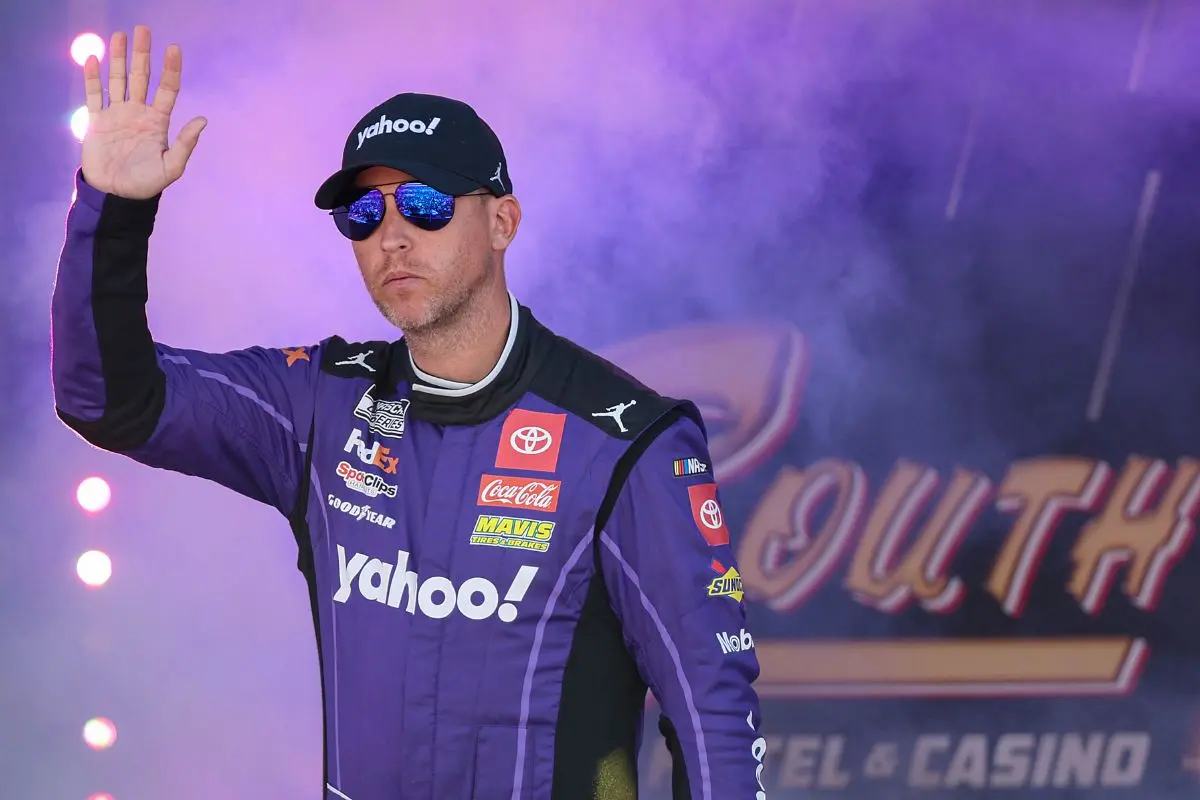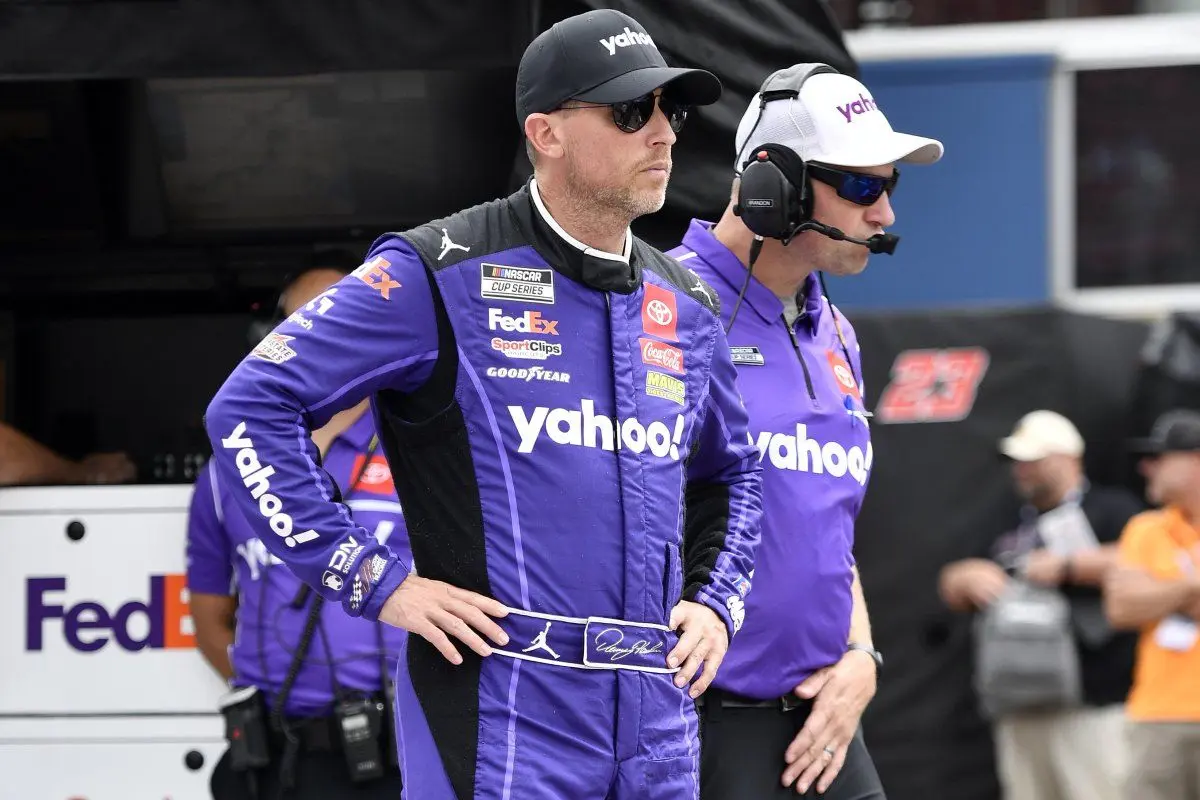Denny Hamlin‘s devastating crash at Martinsville has dealt a severe blow to his NASCAR championship aspirations, heightening the existing pressure as he battles noteworthy mechanical issues this season. A throttle malfunction during practice prompted the incident, further exacerbating ongoing challenges for Denny Hamlin and the Joe Gibbs Racing team, who have struggled with engine reliability.
Key Highlights
- Denny Hamlin’s crash at Martinsville was triggered by a throttle malfunction during practice, severely impacting his NASCAR championship standings.
- The incident exacerbated Hamlin’s existing mechanical struggles, leaving him 18 points behind the NASCAR playoff elimination line.
- Joe Gibbs Racing’s ongoing engine reliability issues have compounded Hamlin’s performance challenges throughout the season.
- Hamlin’s transition to a backup car further complicated his race strategy, making it difficult to compete effectively.
- The crash highlights the importance of consistency in racing, as minor setbacks can drastically alter NASCAR championship aspirations.
High Stakes for Denny Hamlin as NASCAR Championship Cutoff Looms
As the NASCAR season approaches its climax, the stakes have never been higher for Denny Hamlin, who finds himself in an unstable position with the championship cutoff looming. With only one race remaining to determine the final four drivers for the NASCAR Championship race, the pressure intensifies—not just for Hamlin, but for the entire Joe Gibbs Racing team. Following the recent victories by Logano and Reddick in the NASCAR Round of 8, the margin for error has diminished considerably, leaving Hamlin grappling with an eighteen-point deficit to the elimination line.
Hamlin’s misfortunes escalated during practice at Martinsville, where he crashed, hampered his chances to qualify for the Xfinity 500. This incident not only forced him to switch to a backup car but also means he will start from the rear of the field. Given his history as a five-time winner at Martinsville, expectations were high; however, this setback complicates his already challenging path to the NASCAR Championship.
To advance, Hamlin must navigate through a field of skilled competitors while simultaneously overcoming the psychological burden of starting in a compromised position. The implications of this crash extend beyond mere points; they reflect a season marked by inconsistency and missed opportunities.
As the race unfolds, every lap will be critical, as Hamlin attempts to claw back from an unfavorable starting point, working to maintain his NASCAR championship aspirations against overwhelming odds. The stakes have never been higher, and the pressure on Hamlin is tangible as he seeks redemption on the track.
Denny Hamlin’s Throttle Issues Highlight Season-Long Struggles
Denny Hamlin’s recent throttle issues further underscore the challenges he has faced throughout the 2024 NASCAR season. This incident, which occurred shortly after he showcased impressive speed in practice, serves as a poignant reminder of the mechanical difficulties that have plagued both him and Joe Gibbs Racing.
Despite showing promise with the third-fastest speed and dominating long-run averages, Hamlin’s misfortune unfolded as he entered Turn 3 with a stuck throttle, leading to a catastrophic crash against the wall.
The severity of Hamlin’s throttle issues may be attributed to a broader pattern of setbacks this season, including:
- Inconsistent Performance: Despite flashes of brilliance, Hamlin has struggled to maintain competitiveness, leading to missed opportunities.
- Mechanical Difficulties: The ongoing challenges with Toyota Racing Development have resulted in several race-day complications, impacting overall performance.
- Championship Implications: With this latest incident, Hamlin’s hopes for the Phoenix finale are further dimmed, as he risks missing the playoffs for a consecutive year.
This latest setback is emblematic of a season defined by unpredictability and frustration for Hamlin. As he grapples with the consequences of this crash, the cumulative effect of these throttling issues may threaten not only his championship aspirations but also his confidence as a driver.
Denny Hamlin Speaks Out on the Challenge Ahead
Maneuvering the aftermath of his crash, Hamlin articulated the uphill battle he faces in the coming races, emphasizing the intimidating challenge of competing with a backup car. As he candidly noted, winning in NASCAR is already a formidable task, and shifting to a backup vehicle adds a layer of complexity that could jeopardize his championship ambitions. With the likelihood of clinching a position based on points extinguished, Hamlin’s focus shifts solely to securing victories.
“It’s hard enough to win these races straight up. And even if you have the pull, it’s just hard to win… Our battle is going to be very much up-hill… If the backup car has any kind of speed like the primary, I feel okay about it. Certainly, the chances of getting in on points now are done. We just have to figure out a way to win the race.” – Denny Hamlin
Denny Hamlin OK after chunk of rubber causes stuck throttle in practice: "Looking at the way the rubber went in there, the throttle had no chance to come backwards"
📹@TreyLyleVT #NASCAR pic.twitter.com/xoLrmFvUg2
— Frontstretch (@Frontstretch) November 2, 2024
However, the prospects of winning from a less-than-ideal starting position at Martinsville raise questions. Despite the statistical history showing that he has achieved three of his five victories starting from positions 15th or lower, the unique challenges posed by the short track cannot be underestimated.
The NASCAR Gen-7 car has been particularly difficult for him to master, as evidenced by recent performances that have not met his historical success at the Paperclip. Hamlin’s admission that the backup car must match the speed of his primary vehicle highlights the importance of performance consistency.
With engine troubles haunting his team, the imperative for reliability is amplified. Each race serves not only as a test of speed but also as a crucible for resilience. As Hamlin contemplates the road ahead, the confluence of strategy, skill, and a touch of luck will be crucial to navigate the NASCAR competition.
Mixed Results Show Joe Gibbs Racing’s Struggle with Engine Reliability
This season, Joe Gibbs Racing (JGR) has faced a tumultuous expedition marked by notable engine reliability issues that have hindered the team’s performance. As the only four-car organization backed by Toyota, the inconsistency in engine performance has been a notable setback, especially as the team approaches a potential 16-race winless streak if they cannot attain a victory at Martinsville.
The mixed results from JGR drivers underscore the unstable nature of their mechanical reliability:
- Martin Truex Jr. showed speed in practice but ultimately experienced an engine failure during a vital stage at Richmond.
- Christopher Bell appeared poised for victory at Gateway before a valve spring issue dashed his hopes.
- Ty Gibbs, despite winning the pole at Pocono, faced his own engine failure, which contributed to a disappointing outing.
These instances reflect a broader pattern of issues that have plagued JGR throughout the season. The dichotomy of strong individual performances juxtaposed with mechanical failures creates an unsettling narrative for a team that has historically been a powerhouse in NASCAR.
Moving forward, JGR must address these reliability issues to regain their competitive edge and guarantee that their drivers can capitalize on their potential without the looming threat of engine-related complications.
Engine-Related Penalty Stings Denny Hamlin’s NASCAR Playoff Run
The engine-related challenges facing Joe Gibbs Racing have compounded further with a notable penalty that threatens Denny Hamlin’s playoff aspirations. In a surprising turn of events just prior to the playoff opener in Atlanta, the #11 team’s violation of NASCAR’s engine inspection requirements was revealed. This infraction, self-reported by Toyota Racing Development (TRD), stemmed from a logistical error that led to the misplacement and subsequent disassembly of Hamlin’s Bristol-winning engine.
The repercussions were severe: a deduction of 75 championship points and 10 playoff points, coupled with a $100,000 fine for crew chief Chris Gabehart, effectively dropping Hamlin from third to sixth in the standings.
This penalty not only diminishes Hamlin’s immediate championship hopes but also raises broader concerns about the ongoing engine reliability issues plaguing Joe Gibbs Racing this season. The timing is particularly detrimental, as these points are essential in the highly competitive playoff format.
The challenges were further compounded during practice at Martinsville, where a considerable chunk of rubber in Hamlin’s throttle body led to performance slip-ups, illustrating that engine-related troubles are not confined to regulatory violations alone.
As the NASCAR playoffs progress, Hamlin’s team must navigate this unstable landscape with precision and resilience. The cumulative impact of these setbacks emphasizes a vital point: in a sport where every point counts, even minor missteps can have devastating consequences, potentially thwarting a championship run that has long been anticipated.
News in Brief: Denny Hamlin’s Devastating Crash at Martinsville
Denny Hamlin’s recent crash at Martinsville highlights the persistent challenges faced during the current racing season. Engine reliability issues, coupled with penalties, have severely impacted the playoff path, intensifying the pressure on the team.
Despite expressing determination to overcome these obstacles, the combination of mechanical failures and competitive dynamics raises questions about the team’s championship viability. As the season progresses, addressing these vulnerabilities will be essential for a successful turnaround in future races.
ALSO READ: Denny Hamlin’s Nearly Two Decades of Failure Leaves Him Desperate for Redemption




